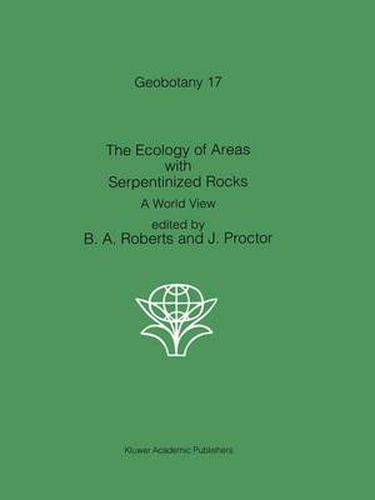Readings Newsletter
Become a Readings Member to make your shopping experience even easier.
Sign in or sign up for free!
You’re not far away from qualifying for FREE standard shipping within Australia
You’ve qualified for FREE standard shipping within Australia
The cart is loading…






This title is printed to order. This book may have been self-published. If so, we cannot guarantee the quality of the content. In the main most books will have gone through the editing process however some may not. We therefore suggest that you be aware of this before ordering this book. If in doubt check either the author or publisher’s details as we are unable to accept any returns unless they are faulty. Please contact us if you have any questions.
B. A. ROBERTS&J. PROCTOR The term ‘serpentine’ referring to rocks and min- of each of the polymorphs. These conditions in- erals, can be traced back to the ancient Roman clude temperatures of generally less than 530 C, era of Dioscorides (A. D. 50) (Faust & Fahey and fluid pH’s in excess of 10 with low pC02* Serpentine protoliths are essentially ultramafic 1962) and they suggest that the speckled colour of serpents and the fact that Dioscorides recom- rocks which fall into a number of categories: (a) mended it for the prevention of snakebite as two stratiform complexes, (b) concentrically zoned complexes, © ophiolite complexes and, (d) high- of many origins of the name. It is well known that the use of serpentinized rocks by sculptors temperature peridotite complexes. The most and carvers since ancient times is a tradition that commonly recognized are generally assigned to the ophiolite suite (Malpas, Ch. 2, this is still carried on today (Fig. 1). The differences in chemical composition of serpentinized rocks volume) and occur in most fold-mountain belts are many and specimens come in a wide range of of the world. Serpentinized ultramafic rocks attractive solid and mixed colours, e. g. , red, H4(MgFe hSi20 9, approximate composition) green, blue and black.
$9.00 standard shipping within Australia
FREE standard shipping within Australia for orders over $100.00
Express & International shipping calculated at checkout
This title is printed to order. This book may have been self-published. If so, we cannot guarantee the quality of the content. In the main most books will have gone through the editing process however some may not. We therefore suggest that you be aware of this before ordering this book. If in doubt check either the author or publisher’s details as we are unable to accept any returns unless they are faulty. Please contact us if you have any questions.
B. A. ROBERTS&J. PROCTOR The term ‘serpentine’ referring to rocks and min- of each of the polymorphs. These conditions in- erals, can be traced back to the ancient Roman clude temperatures of generally less than 530 C, era of Dioscorides (A. D. 50) (Faust & Fahey and fluid pH’s in excess of 10 with low pC02* Serpentine protoliths are essentially ultramafic 1962) and they suggest that the speckled colour of serpents and the fact that Dioscorides recom- rocks which fall into a number of categories: (a) mended it for the prevention of snakebite as two stratiform complexes, (b) concentrically zoned complexes, © ophiolite complexes and, (d) high- of many origins of the name. It is well known that the use of serpentinized rocks by sculptors temperature peridotite complexes. The most and carvers since ancient times is a tradition that commonly recognized are generally assigned to the ophiolite suite (Malpas, Ch. 2, this is still carried on today (Fig. 1). The differences in chemical composition of serpentinized rocks volume) and occur in most fold-mountain belts are many and specimens come in a wide range of of the world. Serpentinized ultramafic rocks attractive solid and mixed colours, e. g. , red, H4(MgFe hSi20 9, approximate composition) green, blue and black.